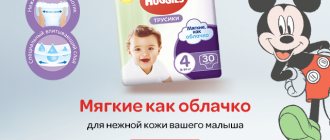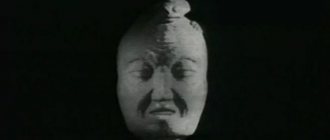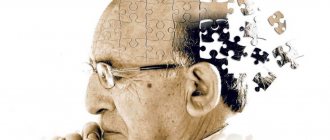Magnetic resonance imaging is a hardware diagnostic method that is used in medical centers to obtain the most anatomically accurate images of the patient’s internal organs and tissues. Diagnostics is carried out in a non-invasive way, that is, no instruments are introduced into the patient’s body, and no punctures are made. From the point of view of the subject, the main advantage of MRI is the comfort and safety of the procedure. Doctors value magnetic resonance imaging for its:
- high tissue contrast;
- informative and comprehensive assessment of all body tissues;
- high sensitivity during oncological search.
Since the examination method does not involve any radiation exposure, it is available to a wide range of patients, including young children, pregnant women, cancer patients and the elderly.
Free diagnostic consultation
If in doubt, sign up for a free consultation. Or consult by phone
+7
All about diagnostics
How does an MRI machine work?
The operating principle of a magnetic resonance imaging scanner is based on the effect of nuclear magnetic resonance. The installation itself consists of a scanner with a powerful magnet inside and a computer installation that analyzes the data and displays it on the monitor in the form of three-dimensional three-dimensional images. When the patient's body enters the scanning device, it is exposed to a strong magnetic field and radio frequency pulses. This causes vibrational movements in the protons of the hydrogen atoms of the body's cells. The computer reads these resonant pulses and builds tomograms - three-dimensional images - based on them.
The more water is contained in the tissues of the body, the better the resonance effect will be, and the organs will appear more accurately and in more contrast in the photographs. Since the human body is 70% water—blood is 98% water, muscle is about 75%, and bone is about 28%—most tissue will show up very well on an MRI. The only exceptions would be the chest organs: lungs, bronchi, since they contain a lot of air and little water. Bone structures are also difficult to visualize on MRI. The water content in bones is minimal, so they are displayed on tomograms, but not clearly enough to fully judge the quality of bone tissue. The optimal method for examining the chest organs and bones will be x-ray diagnostics - computed tomography and radiography.
| OPEN TYPE MRI | CLOSED MRI |
Magnetic resonance imaging and its varieties
In MRI centers, tomography can be performed using several basic protocols:
- Native MRI;
- MRI with contrast
- Magnetic resonance angiography.
The basic MRI procedure is called non-contrast or native tomography. This is what is used in most cases. During this examination, the focus of the scan is soft and bone tissues, and the patient’s internal organs.
The procedure for magnetic resonance imaging with contrast is a special protocol during which, in addition to the native scan, an examination is performed when a special contrast compound is injected into the patient’s body. In most cases, a drug based on salts of the rare earth metal gadolinium is used for contrast enhancement. The purpose of a contrast agent is to maximize tissue contrast. Due to this, doctors have the opportunity to more clearly visualize all small formations, search for metastases and very small foci of inflammation. Based on the type of contrast accumulation and release, the radiologist can judge whether the tumor is benign or malignant.
If the subject of examination is the human vascular system, an MR angiography protocol is used. During it, the computer program is set in such a way that only the vascular bed is visualized in the images. Using the angioprogram, doctors can assess the condition of arteries and veins and identify most vascular pathologies, for example, occlusions, malformations, kinks, aneurysms, bifurcations, ruptures and intimal tumors.
Indications
Magnetic resonance imaging can be done in MRI centers either by a doctor’s referral or on the patient’s personal initiative. Reasons for scheduling an MRI may include:
- Frequent pain of unknown etiology;
- Head and body injuries;
- Dizziness, fainting, convulsions;
- Disorders of the musculoskeletal system;
- Deterioration of sensitivity, vision, speech, hearing;
- Decreased mental activity, memory, concentration;
- Pain in the abdomen and groin area;
- Chronic diseases.
Safety
Initially, the method was called nuclear magnetic resonance tomography. However, the mention of “nuclear” origin caused a certain fear in people after the accident at the Chernobyl nuclear power plant. Therefore, they decided to abandon this term in favor of magnetic resonance imaging. In fact, MRI, unlike X-rays or CT scans, does not expose the body to radiation. The magnetic field is quite safe. It surrounds us everywhere. Mobile phones, microwave ovens, televisions and other household appliances are a source of magnetic field, but it has less “power”.
The influence of MRI on human health has been studied since the introduction of the method into the medical field. For more than 40 years, scientists have not been able to identify negative aspects that would allow the study to be assigned a certain hazard class. This is why MRI is considered a fairly safe diagnostic method, but with some caveats. Due to the relatively short period of time, it is impossible to understand how the research affects subsequent generations. Therefore, MRI is not recommended to be performed unsupervised. Like any other type of research, it should be prescribed when indicated, and not at the request of the patient.
Contraindications
Magnetic resonance imaging has a number of contraindications dictated by the physics of image acquisition. Since the MRI machine is a large magnet, it tends to attract or heat any metal objects. Therefore, MRI scans are not performed on patients who have ferromagnetic metal in their body. In modern medicine, most implants are made of safe non-ferromagnetic alloys, such as titanium or medical plastic. It is absolutely safe to perform MRI with them. However, if the patient has steel prostheses, iron bullets or shrapnel in his body, magnetic resonance imaging will be contraindicated. The machine's strong magnetic field can cause metal inclusions to move or become very hot, causing either internal bleeding or burns.
Magnetic resonance imaging should be performed with caution in people who have artificial pacemakers, such as pacemakers, neurostimulators, or hearing aids. A strong magnetic field can damage any electronic device. Therefore, if the product passport does not indicate that it is MRI compatible, the study cannot be done.
The remaining limitations to MRI are relative. For example, due to their heavy weight or size, overweight and large people may have difficulty finding the right model of magnetic resonance imaging scanner. Most MRI machines are designed for a body weight of no more than 120 kg and a circumference of no more than 120 cm. However, there are installations with a load capacity of up to 200 kg and an aperture of 140 cm.
People with severe claustrophobia sometimes find it difficult to endure a full scanning session in closed machines. Open-circuit tomographs were specially created for patients prone to panic attacks.
If you belong to the category of patients for whom MRI is contraindicated, alternative forms of scanning for you would be computed tomography, quadrilateral radiography and ultrasound examination using an expert-class device.
You can read in more detail about all the absolute and relative contraindications to MRI here.
TESTING: TUTOR'S ADVICE
01/9/2014 Archive (2014)
Why, when and where is it better to undergo RT? How to prepare for each stage of the test and evaluate its results? And finally, why do tutors require their students to pass all stages of rehearsal testing? The famous physics and mathematics tutor Evgeniy Livyant answers these and other questions from applicants.
After the results of the first stage of the RT became known, some students decided to increase the number of classes, some decided to stop them, and some decided to change the tutor or subject for the CT. Students ask many questions about what their future prospects are and how to feel about their results. Before answering, I first ask the applicant where and how he took the PT, and only then comment on the student’s results. In addition, students constantly compare their PT results with the scores of their classmates, which also gives them many questions.
I decided that I should have long ago expressed my attitude towards RT and answered most of the frequently asked questions, and at the same time wrote instructions for passing RT. We will force the students of our center to study it carefully, and also ask them to show it to their parents.
Why?
Rehearsal testing should be treated like a dress rehearsal for a play in a theater or like an exercise in the army. The more such rehearsals there are, the better the CT result will be.
You need to practice performing each element:
1) register;
2) pay;
3) repeat something before the test;
4) get enough sleep;
5) get yourself in the right psychological mood;
6) arrive on time at the testing point, go through control, find the right audience;
7) once again get into the right psychological mood;
 When taking the test, correctly allocate time to solve simple and complex problems;
When taking the test, correctly allocate time to solve simple and complex problems;
9) learn to use the drafts that are given during testing;
10) learn not to be distracted during the test by your deskmates who will pester the applicant with various questions;
11) see how communication occurs with the testing organizers and with the teachers who are in the audience;
12) learn to fill out the form without errors and in a short time.
There are no unimportant elements here: any seemingly trivial thing can throw an applicant out of his state of mental balance. I could give many examples from the experience of my students who registered incorrectly, lost documents or payment receipts, could not find the right audience out of excitement, filled out the testing form incorrectly, used the draft ineptly and did not find an already solved problem at the right moment... Of course, we can say that this is what they need, these “mama’s boys” and daughters unadapted to life, let them get it “on the head.” It will only benefit them. And we can say that when preparing for the most important events in life, there are no trifles; everything must be done skillfully, carefully and accurately, having trained in advance.
I both ask and demand that students go through all three stages of RT; moreover, I advise tenth graders to go through the third stage of RT together with eleventh graders. I know tutors who require their students to go through each stage of RT twice - testing, detailed analysis of the test, consolidating knowledge on re-testing - and I do not think that this is overkill. In our center, we jokingly threaten our students with a 2-fold increase in payment for those who have not passed at least one of the RT stages.
When?
As you know, the first stage of RT takes place from October to December, the second - in January and February, the third - in March and April. I advise students to take the test at the end of each stage (at the end of December, February and April respectively) to ensure that they have covered as much of the course material as possible before testing time.
But there is one negative point here - by the end of each stage, the conditions of the RT become less and less secret - it is allowed to take out drafts from the rehearsal test, and students who have already written the test actively discuss it on social networks. Quite often it is possible to find the original test. The applicant must overcome the temptation to take the test, having solved all or part of it in advance. In addition, some school teachers, guided by the best intentions, review individual RT problems or the entire test at the request of students in class. It is important in this case to ask the teacher to analyze these RT problems only after all the students have written it.
You also need to choose the right day of the week to take the test. It is very important that on the day of the test the applicant does not have more important things to do, which means that the student should not be tired before the test and should not rush anywhere after the test. Therefore, the best testing day is Saturday or Sunday. You can choose a weekday, but on this day you should not go to school in the morning.
Where?
There is no fundamental difference in which testing point you take it at. According to reviews from Tatarstan applicants, it is well organized at BSU and at the BSU Lyceum, but I emphasize once again that you need to choose a testing point primarily for reasons of convenience.
How?
It is very important that the applicant takes RT very seriously and tries to get the best possible result using only legal means.
These requirements mean:
— before RT, prepare yourself to achieve maximum results;
- perform RT according to the CT rules, that is, without cheat sheets, using a mobile phone, a calculator (for mathematics), or tips from your desk neighbors;
- use all the time allotted for RT, and do not run away after an hour in order to have time to do something else that day or relax.
You must be prepared for the fact that your desk neighbors will ask you different questions. It may be impolite not to answer them, but if you get interrupted too often, try to negotiate so that you won't be interrupted. Just in case, let me remind you that at the CT they kick you out for talking without any talking.
If you went to RT with a friend, then show him these instructions and agree to meet with him no earlier than RT ends.
How to treat the results of RT?
On the forum of an article dedicated to centralized testing, I read a heartbreaking post, the meaning of which boiled down to the fact that the daughter of the author of the post passed all rehearsal tests in the Russian language with 75 - 90 points, and passed the central test with 24 points. The author of the post makes an obvious conclusion to her that everything is sold or bought at the central heating center.
Students often tell me stories in confusion about how their classmates score high on the CT test, although they have low grades at school and in general are not particularly prepared for the CT test. Applicants cannot rationally explain these facts, but I can.
There are several reasons:
- some tutors find the conditions for RT tasks on social networks or sign up and undergo testing before sending a student to it, and then show the solution to the problems to the student so that the result of RT satisfies the student’s parents;
— a significant number of students, having learned its condition from classmates who passed the test, solve the RT in advance or simply find out the codes with the correct answers on social networks in order to at least temporarily resolve their family problems (in other words, so that parents do not “float their brains”).
Most likely, the last algorithm was used by the daughter, whose mother thought that CTs were well rented out only for money.
I will take the liberty of advising parents of applicants with unrealistically optimistic RT results not to succumb to illusions, but to soberly assess the situation. It is equally important that parents do not demand high results on RT from their children, provoking them to commit dishonest acts. Already this school year, some students told me what “kind words” they heard from their parents when the results of the first stage of RT became known.
As for applicants, I ask them to maintain fortitude and not do anything stupid by artificially increasing the RT result. To convince my students not to believe the mythical results of some classmates, I invite them to bet on any number of chocolates that such a high result will not be repeated at the CT. It will not be possible to find and solve the CT test in advance. I am absolutely sure of this, since over the past ten years I have heard many stories about how a friend of my friends received “stopizzot” points on the CT, but only a couple of times the story was truly reliable. It is important to understand that I and my colleagues, whom I absolutely trust, have more than four hundred students every year. Moreover, we interact with many students when they become students. Therefore, I am sure that if there were constant massive leaks of information about the conditions of the DH tasks, I would know about it. So, I want applicants to know that neither they nor their classmates with fantastic RT results on the CT will write anything off. And I'm ready to bet ten chocolates with anyone who disagrees with me on this issue.
How to prepare for each stage of RT and how to evaluate its results?
To adequately assess the results of each stage of RT, it is important to understand some features.
1st stage. Students who prepare for the CT from the beginning of the school year already know something by December, but this knowledge is absolutely not enough to get high scores. In addition, no special repetition is carried out for this stage. At the first stage, the applicant must feel the atmosphere of testing, learn how to fill out the form correctly, and try to understand how the wording of test problems differs from the wording of problems in regular collections. A normal result in mathematics is in the range of 30 – 50 points; in physics there is no normal result of the first stage, since very little has been completed yet.
For students of those few schools where they can get a good education in mathematics, I consider the normal result of the first stage of RT to be 50–70 points, and for physics 30–50 points.
As for students who only learned in September or October how to solve a quadratic equation, their participation in RT is already a small victory over themselves.
Frankly, the first stage of RT is needed in order to screw it up. For example, already this year a very strong student screwed up the entire part B of the physics test by entering answers with dimensions of quantities into the form, although only the quantity itself should be entered, without dimension (for example, 5, not 5 m/s). As a result, the scanner counted all answers to part B as incorrect.
2nd stage. You should not specially prepare for going through this stage either, that is, instead of studying new topics, repeat material that has already been covered. For example, in mathematics, most likely you will study exponential and logarithmic equations and inequalities, but in the second stage of RT these topics will not appear (they will appear only in the third stage).
As a rule, the results of conscientious applicants increase by approximately 10–15 points compared to the first stage.
3rd stage. Naturally, this is the most important stage of RT. Here I categorically insist that applicants take it as late as possible, and therefore as close to the CT as possible. By this stage, it’s worth repeating a little of the material you’ve studied, but you won’t be able to repeat everything well, otherwise you’ll have to stop studying the new material, and there’s so much of it that by April you won’t be able to study everything. So, we must go to the third stage as if it were a “last and decisive battle,” but remember that there is still a month and a half left for preparation. Compared to the second stage, scores usually increase by another 10-15 points.
By the way, some applicants, having received high scores at the third stage, stop preparing for the CT, believing that they are already sufficiently prepared for the entrance exams. This is a very serious misconception, since it is necessary to constantly maintain good athletic shape before the CT.
On the analysis of RT decisions
After the RT results become known, it is necessary to review the test with the teacher. It makes sense to analyze problems on topics that have not yet been studied later, closer to the third stage, or during the analysis of the third stage.
What to do if the RT results are much lower than the teacher expects?
Here I will describe two real stories that happened to my students.
About seven years ago, I was taught by a girl who had very good abilities and excellent preparation (she had a wonderful school teacher). My job was to organize systematic repetition of the material and demonstrate the peculiarities of the wording of test tasks. But when I suggested that the girl test her strength in RT, just in case, she began to literally shake with excitement. As far as I remember, I was never able to persuade her to go to at least one stage of RT, and at the CT, instead of 90 - 100 points, she scored about 50. It was after this story that I began not to ask, but to demand that students go to RT, and at all stages, if necessary, involved the student’s parents to take measures of persuasion and coercion.
The second story happened with a guy who was also well prepared by school teachers, and I was only doing repetition and showing some tricks. After the first RT, the student’s father called and asked how we were doing. I replied that everything was more than good, praised the student and his teachers, and painted bright prospects. The student’s father listened to me carefully and then asked what result, in my opinion, his son showed at the first stage of RT. I replied that I would be surprised if the result was less than 80. It turned out that I was mistaken, since the student scored twenty points! It was a shock. I assumed that the guy simply filled out the form incorrectly, and asked that he be sent to the second stage of RT as soon as it began.
We continued to study, the results of the work seemed excellent to me, but the result of the second stage of RT also turned out to be around twenty. The student disappeared for several weeks, then his father called and said that they turned to another tutor (in my opinion, this was an absolutely correct decision), who, after several lessons, confirmed everything I said. He also said that his son wants to continue studying with me. I replied that we would radically change the entire training scheme.
We stopped learning new material and stopped repeating. During classes, the student completed the test in front of my eyes, filled out the actual answer form, and I controlled the time for completing the test. The homework was similar - solving timed tests with filling out a form. It turned out that the student was completely incorrect in allocating his time to complete the test. For two months we did not study anything, but only solved and analyzed tests. As a result, he wrote the third PT at seventy points, and the CT at more than eighty points.
Why such details? The tutor, using real RT results, can and must correct the course of preparation, but for this he needs to know the true, and not the mythical, RT results.
Dear parents! If you are not satisfied with your child’s RT results, be sure to talk to the tutor before looking for another teacher! It is quite possible that the preparation is going well, but it needs to be adjusted. Otherwise, you risk creating a situation where tutors will decide the RT with your child in advance so that the test result suits you.
What to do in May and June?
“If you don’t eat enough, you won’t get enough” - this statement can often be heard or read when the issue of preparing for the CT in the last month before the test is discussed. I strongly disagree with this. I believe that at this time the applicant should behave like an athlete before a competition, maintaining his shape, but not overloading.
At the beginning of May, the study of new material should be stopped. A month or a month and a half before the CT must be spent reviewing the material studied, solving the RT and CT tests of previous years. Naturally, after solving each test, you need to conduct a detailed analysis of it with the teacher.
We prepare our own rehearsal tests, which are similar to the third stage of RT. We solve and sort them out immediately after the end of the third stage of RT, that is, throughout May and June. As a rule, our students add another 10–15 points to the result of the third stage of RT.
Conclusions you should draw
I will repeat once again that RT is a very serious and responsible matter, which means that there is no need to plan any other things on the test day that RT could interfere with.
In order to properly plan preparation for the CT, it is important for the applicant, his parents, teachers, and tutors to know the real intermediate results of the preparation. We must try to get the best possible result at RT, but we must achieve it only by honest means.
Please note that each missed stage of RT is a loss of 5 to 10 points on the CT!
May and June are a time for systematic repetition of studied material, and not for studying new topics, and especially not for relaxation.
Evgeniy Livyant, tutor
Preparation
Most MRI examinations do not require any preparation from the patient. The exceptions are MRI of the pelvic organs, MRI of the abdominal organs and MRI of the gastrointestinal tract.
- A reminder to the patient about preparing for MRI of the pelvic organs.
- A reminder to the patient about preparing for an MRI of the abdominal organs.
Before undergoing the procedure, you should remember that the tomograph scans a person using a magnetic field, which is created during the procedure in a tomographic machine. It follows that everything metallic: jewelry, watches, hairpins, clothes with a zipper should be left outside the MRI room. You should also remove all electronic devices from your pockets.
If you suffer from claustrophobia or cannot lie still, doctors recommend taking sedatives before the diagnosis.
If you have an MRI with contrast, tell your healthcare provider about any allergies you have and any chronic kidney disease you have. In the case of contrast-enhanced tomography, eating is not recommended 2 hours before the diagnosis.
How does RT itself go?
The test content of rehearsal testing is compiled according to the same specifications as centralized testing. Typically, the tasks of the 1st stage are most similar to the CT of the previous academic year. And based on the tests of the 2nd and especially the 3rd stage of RT, you can judge which tasks will be included in the centralized testing. RT is assessed using the same methodology as CT. The content of the tests is based on the educational material for the high school course. You can go to RT for training purposes even from the 8th grade or not be a schoolchild at all and instead of 3 times visit it at least 10 times. No one limits the applicant in this. The main thing is that it makes sense and is useful.
results
The results of the magnetic resonance examination will be a series of three-dimensional black and white images. On average, an MRI machine produces 1,000 to 1,500 high-resolution images per scan. Their interpretation is carried out by a radiologist. He evaluates the anatomical structures and in his conclusion notes the main characteristics: size, location, degree of invasion into neighboring organs. If a contrast-enhanced examination was carried out, in addition to these data, the diagnostician indicates the behavior of the tissues after the administration of contrast. If any anomalies are detected, the doctor gives their initial interpretation.
Based on the results of the magnetic resonance examination, the patient will be given a written doctor’s report and a series of tomograms recorded on electronic or film media. The X-ray report is not a final diagnosis. The main task of the radiologist is only to describe all detected abnormalities. With this data, the patient should be referred to a specialized specialist who, taking into account all the results of the examination, medical history, tests and diagnostics, will be able to make a final diagnosis and propose a treatment strategy.
In some clinics, MRI results include a free consultation with a specialist with extensive diagnostic experience, who will talk in detail about the results of the study and give recommendations on further actions. It could be:
- free consultation with a radiologist;
- free consultation with a neurologist based on the results of the tomography;
- free consultation with an orthopedist based on the results of the tomography.
EXAMPLE OF MRI CONCLUSION - spine
MR signs of degenerative-dystrophic changes are revealed in the form of a decrease in the intensity of the MR signal from the intervertebral discs in the L1-S1 segments on T2-WI due to dehydration of the nucleus pulposus of the discs, with a decrease in height in the L4-S1 segments, small anterior and posterolateral marginal bones growths in segments L1-S1, with calcification of the anterior longitudinal ligament at the points of attachment to the vertebral bodies. In the intervertebral joints, degenerative changes are visualized in the form of compaction, unevenness of the articular surfaces, and hypertrophy of the yellow ligaments. In the adjacent sections of the vertebrae L4-L5, L5-S1, zones of heterogeneous increase in the MR signal on T1, T2-WI and hypointense on STIR-IP (due to fatty degeneration) are determined. Irregularities of adjacent endplates of the vertebral bodies Th12, L1, L2, L3, L4, L5, S1 due to Schmorl’s cartilaginous nodes.
MRI of the spine
| Name of service | Price | Discount |
| MRI of the cervical spine | from 2100 rub. | At night |
| MRI of the thoracic spine | from 2100 rub. | At night |
| MRI of the lumbosacral spine | from 2100 rub. | At night |
| MRI of the sacrococcygeal spine | from 1500 rub. | At night |
| MRI of the cervical spine and craniovertebral junction | from 2100 rub. | At night |
| MRI of the sacroiliac joints | from 2100 rub. | At night |
| MRI of the entire spine | from 6500 rub. | At night |
| MRI of the central nervous system (all parts of the spine + brain) | from 9000 rub. | At night |
| Cost of contrast administration | from 2100 rub. | At night |
MRI of joints
| Name of service | Price | Discount |
| MRI of the knee joint | from 2500 rub. | At night |
| MRI of the hip joints | from 2500 rub. | At night |
| Shoulder MRI | from 2500 rub. | At night |
| MRI of the elbow joint | from 2500 rub. | At night |
| MRI of hands | from 4000 rub. | At night |
| MRI of the foot | from 4000 rub. | At night |
| MRI of the ankle | from 2500 rub. | At night |
| MRI of the wrist joint | from 4200 rub. | At night |
| MRI of the temporomandibular joints (pair) | from 3800 rub. | At night |
| Cost of contrast administration | from 2100 rub. | At night |
Vascular MRI
| Name of service | Price | Discount |
| MRI of cerebral vessels (MR angiography of the brain) | from 2100 rub. | At night |
| MRI of neck vessels (MR angiography of the neck) | from 2100 rub. | At night |
| MRI of spinal vessels (MR angiography of the spine) | from 3200 rub. | At night |
| MRI of the abdominal or thoracic aorta | from 4100 rub. | At night |
| MRI of extremity vessels | from 4000 rub. | At night |
| MRI of renal vessels | from 3800 rub. | At night |
| MRI of pulmonary vessels | from 3800 rub. | At night |
| MRI of pelvic vessels | from 3800 rub. | At night |
| MRI of the coronary vessels of the heart | from 6500 rub. | At night |
| MRI of the brain and MR angiography (comprehensive examination of the head) | from 4800 rub. | At night |
| MRI of the cervical spine and MR angiography of the neck (comprehensive examination of the neck) | from 4800 rub. | At night |
| MR venography or MR arteriography | from 3200 rub. | At night |
| Cost of contrast administration | from 2100 rub. | At night |
Tissue MRI
| Name of service | Price | Discount |
| MRI of soft tissues of the face | from 4200 rub. | At night |
| MRI of soft tissues of the buttocks | from 4200 rub. | At night |
| MRI of soft tissues of the neck | from 4200 rub. | At night |
| MRI of soft tissues of the extremities | from 4200 rub. | At night |
| MRI of the tongue and soft tissues of the throat and larynx | from 4000 rub. | At night |
| Cost of contrast administration | from 2100 rub. | At night |
MRI of organs
| Name of service | Price | Discount |
| MRI of the lungs and mediastinal organs | from 3200 rub. | At night |
| MRI of the pelvis in women | from 3200 rub. | At night |
| MRI of the pelvis in men | from 3200 rub. | At night |
| MRI of the external genitalia | from 3000 rub. | At night |
| Abdominal MRI | from 3200 rub. | At night |
| Abdominal MRI with MR cholangiography | from 4000 rub. | At night |
| MRI of the retroperitoneum | from 3200 rub. | At night |
| MRI of the gallbladder and bile ducts (MR cholangiopancreaticography) | from 3200 rub. | At night |
| MRI of the urinary tract (MR urography) | from 3200 rub. | At night |
| MRI of the intestine (MR colonoscopy) (MR enterography) | from 3200 rub. | At night |
| Hydro MRI of the intestine | from 6000 rub. | At night |
| MRI heart | from 6000 rub. | At night |
| Whole body MRI/Whole body diffusion MRI | from 11,000 rub. | At night |
| MRI oncology search | from 8000 rub. | At night |
| Fetal MRI | from 5500 rub. | At night |
| Cost of contrast administration | from 2100 rub. | At night |
MRI of glands
| Name of service | Price | Discount |
| MRI of the thyroid gland | from 4000 rub. | At night |
| MRI of the mammary glands (MR mammography) | from 4000 rub. | At night |
| Cost of contrast administration | from 2100 rub. | At night |
MRI of the head
| Name of service | Price | Discount |
| MRI of the brain | from 2100 rub. | At night |
| Brain MRI with contrast | from 5100 rub. | At night |
| MRI of cerebral vessels | from 2100 rub. | At night |
| MRI of the pituitary gland | from 2100 rub. | At night |
| MRI of the pituitary gland with contrast | from 5000 rub. | At night |
| MRI of the sinuses | from 2050 rub. | At night |
| MRI of the eye orbits and optic nerves | from 2500 rub. | At night |
| MRI of cranial nerves | from 3200 rub. | At night |
| Cost of contrast administration | from 2100 rub. | At night |










